A force of 0.5N is applied on upper block as shown in figure. The work done ( in joule ) by upper block on lower block for a displacement of 3m is :
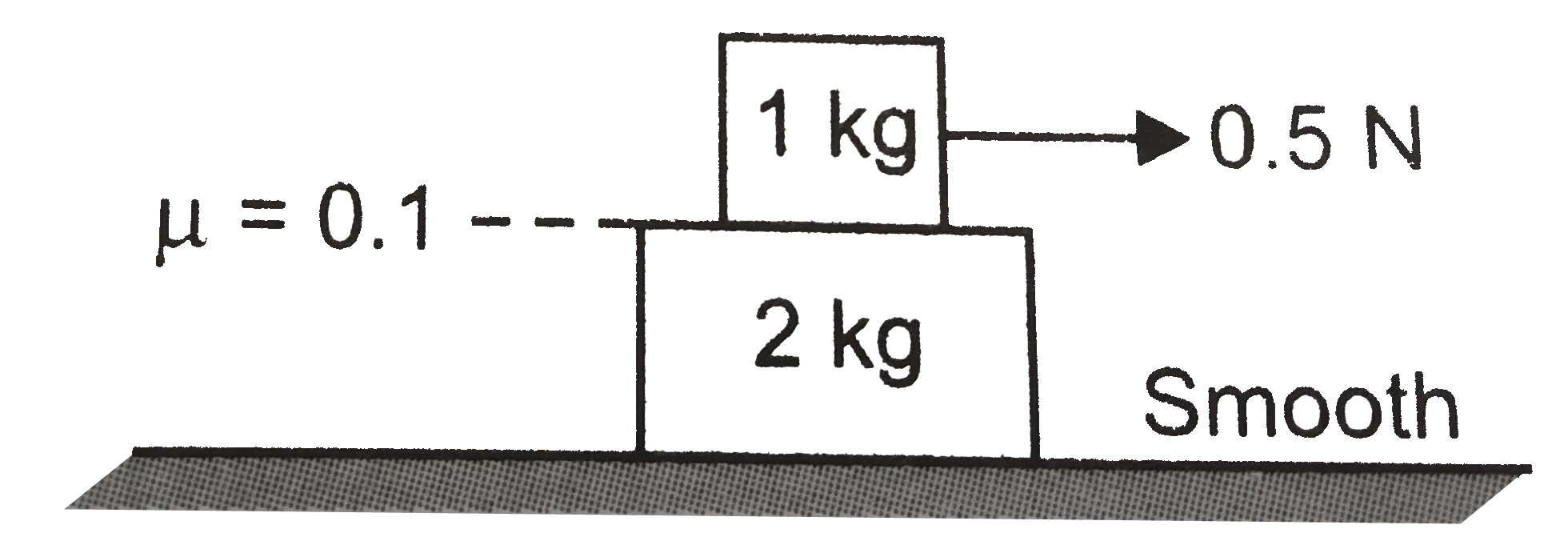
Force of friction between the two blocks, Figure, f=μR=μmg=0.1×1×10=1N
As applied force F=0.5N<f.
∴ The two blocks move together.
Common acceleration,
a=F1+2=0.53=16m/s2
∴ Force applied by upper block on lower block
F′=ma=2a=2×16=13N
Work done by upper block on lower block for displacement of 3m=F3∧(')×s=13×3=1J
Topper's Solved these Questions
- WORK, ENERGY AND POWERBOOK - PRADEEPCHAPTER - WORK, ENERGY AND POWEREXERCISE - Assertion-Reason Type Questions
24 Videos
- WORK, ENERGY AND POWERBOOK - PRADEEPCHAPTER - WORK, ENERGY AND POWEREXERCISE - Comprehension
9 Videos
- THERMODYNAMICSBOOK - PRADEEPCHAPTER - THERMODYNAMICSEXERCISE - Assertion- Reason Type Questions
19 Videos
Similar Questions
A force of F = 0.5 N is applied on lower block as shown in figure. The work done by lower block on upper block for a displacement of 6m of the upper block with respect to ground is (in J). (Take g=10m/s2).
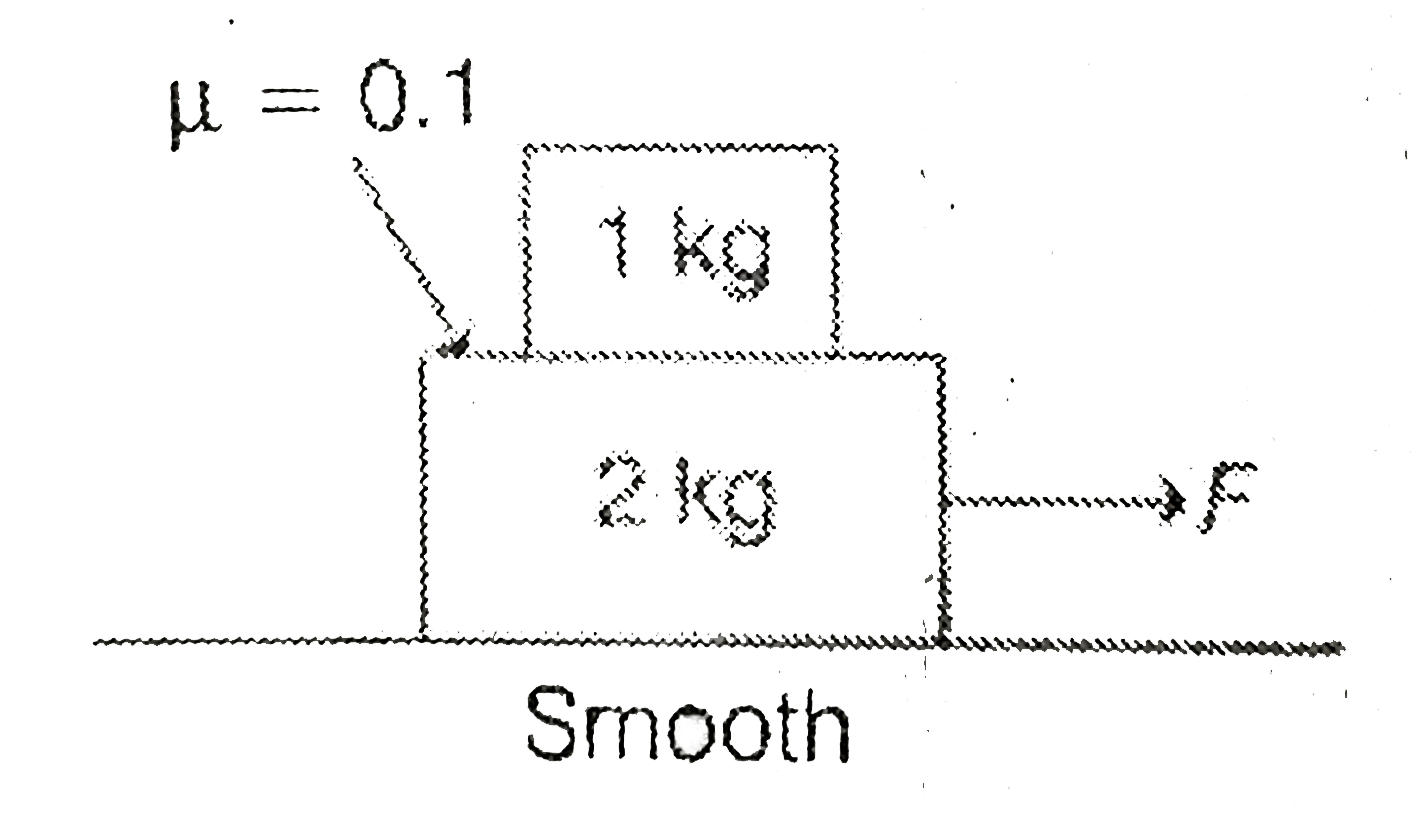
View SolutionA small block of mass 20kg rests on a bigger block of mass 30kg, which lies on a smooth horizontal plane. Initially the whole system is at rest. The coefficient of friction between the blocks is 0.5. The horizontal force F=50N is applied on the lower block.
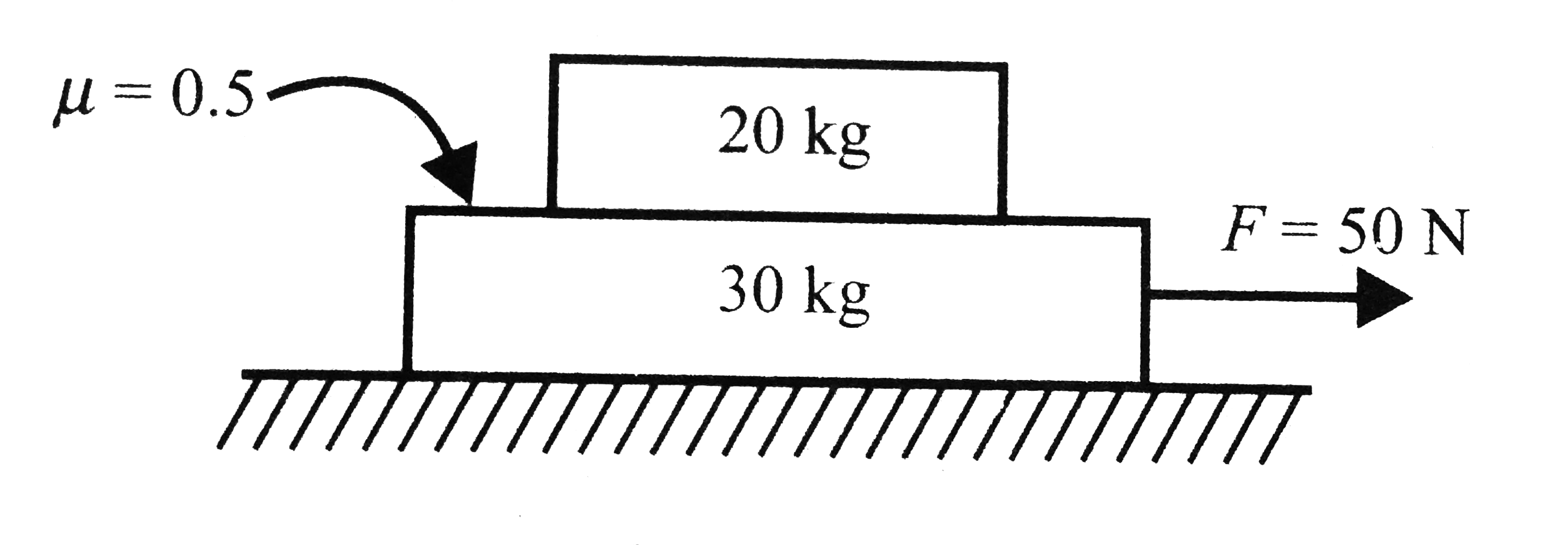
a. Find the work done by fricitonal force on upper block and on the lower block in t=2s.
b. Is the magnitude of work done by the frictional force on upper and lower blocks same?
c. Is the work done by the frictional force on the upper block converted to heat or mechanical energy or both?
View Solution
Knowledge Check
A force of F=0.5 N is applied on lower block as shown in figure. The work done by lower block on upper block for a displacement of 3 m of the upper block with respect to ground is (Take, g=10 ms−2)
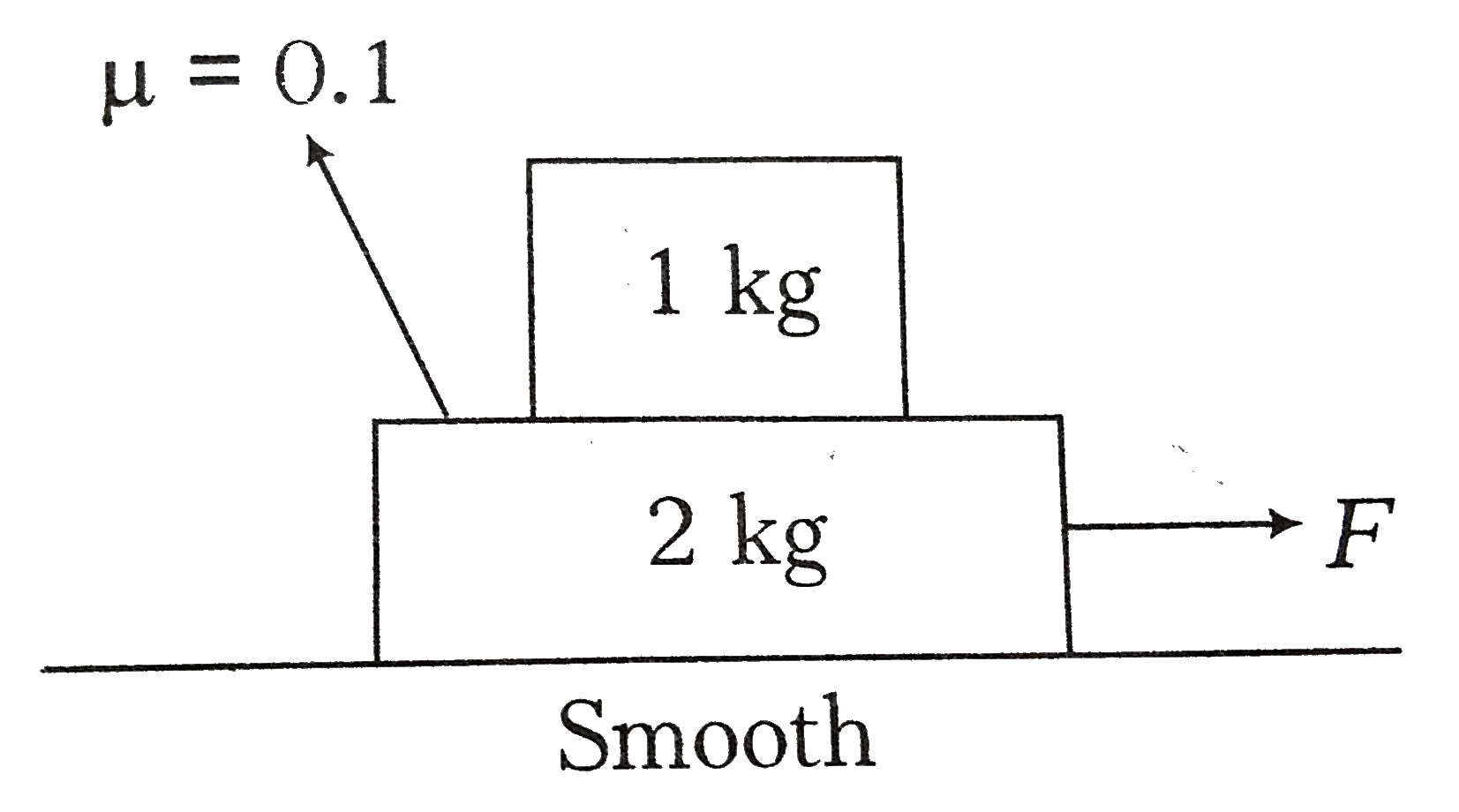 A−0.5JB0.5 JC2 JD−2J
A−0.5JB0.5 JC2 JD−2JA force of 20N is applied on upper block as shown in the figure. Te total work done by frictional during the time interval in which the upper block has a displacement of 15m with respect to the ground is (take g=10m/s2 )
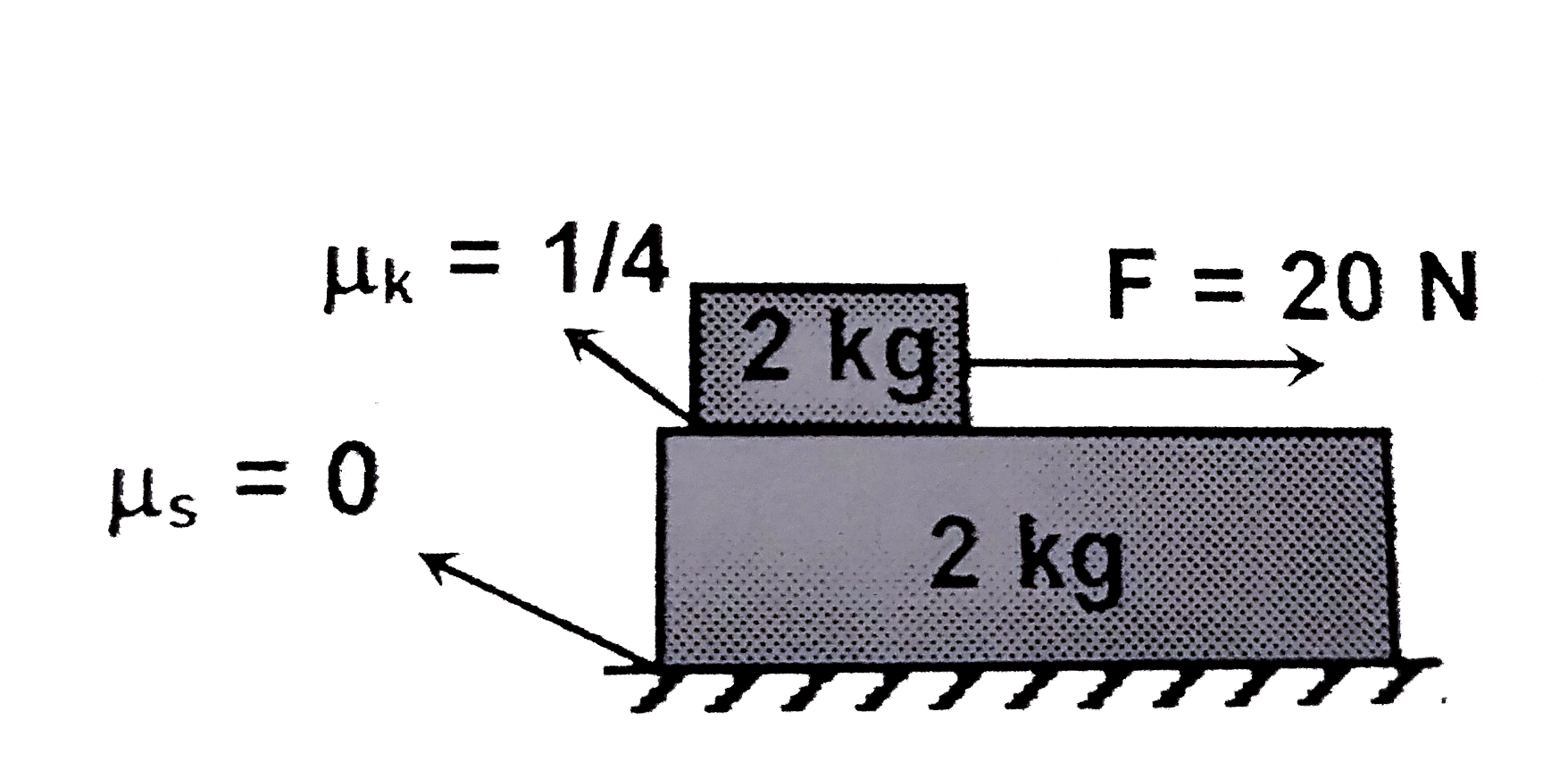 A50JB−50JC75JD−75J
A50JB−50JC75JD−75JA block of negligible size and mass 2kg is placed above a plank of mass 4kg and length 16m as shown in figure. A force of 44N is applied on the lower block as shown in the figure. The ground is smooth, coefficient of friction between upper and lower block is 0.2. Find the time after which the upper block will fall over.
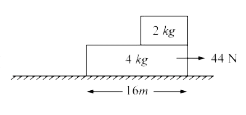 A1sB2sC3sD4s
A1sB2sC3sD4s
A block of mass 10kg is placed on a horizontal surface as shown in the figure and a force F=100N is applied on the block as shown, in the figure. The block is at rest with respect to ground. If the contact force between block and ground is 25n (in Newton) then value of n is : (Takeg=10m/s2)
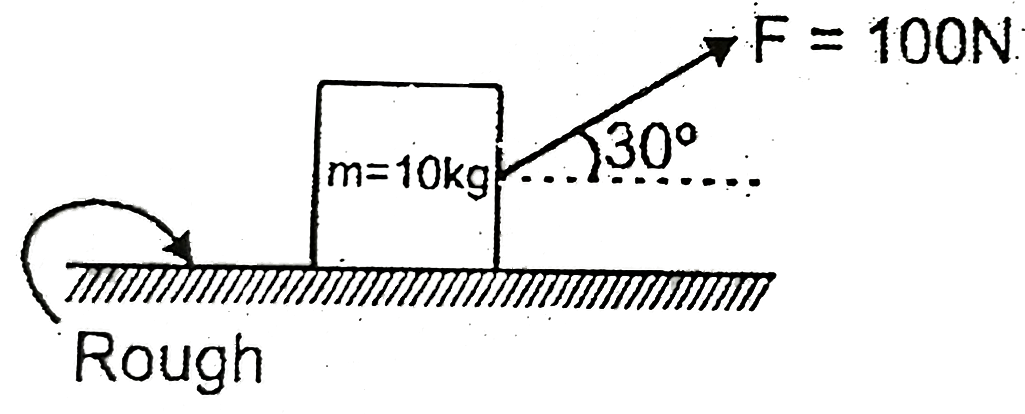
View SolutionA 100g block moves along X− axis. Its acceleration as a function of displacemetn is shown in figure. Calculate work done (in joule) on the block by the force applied as the block moves from x=0 to x=8m.
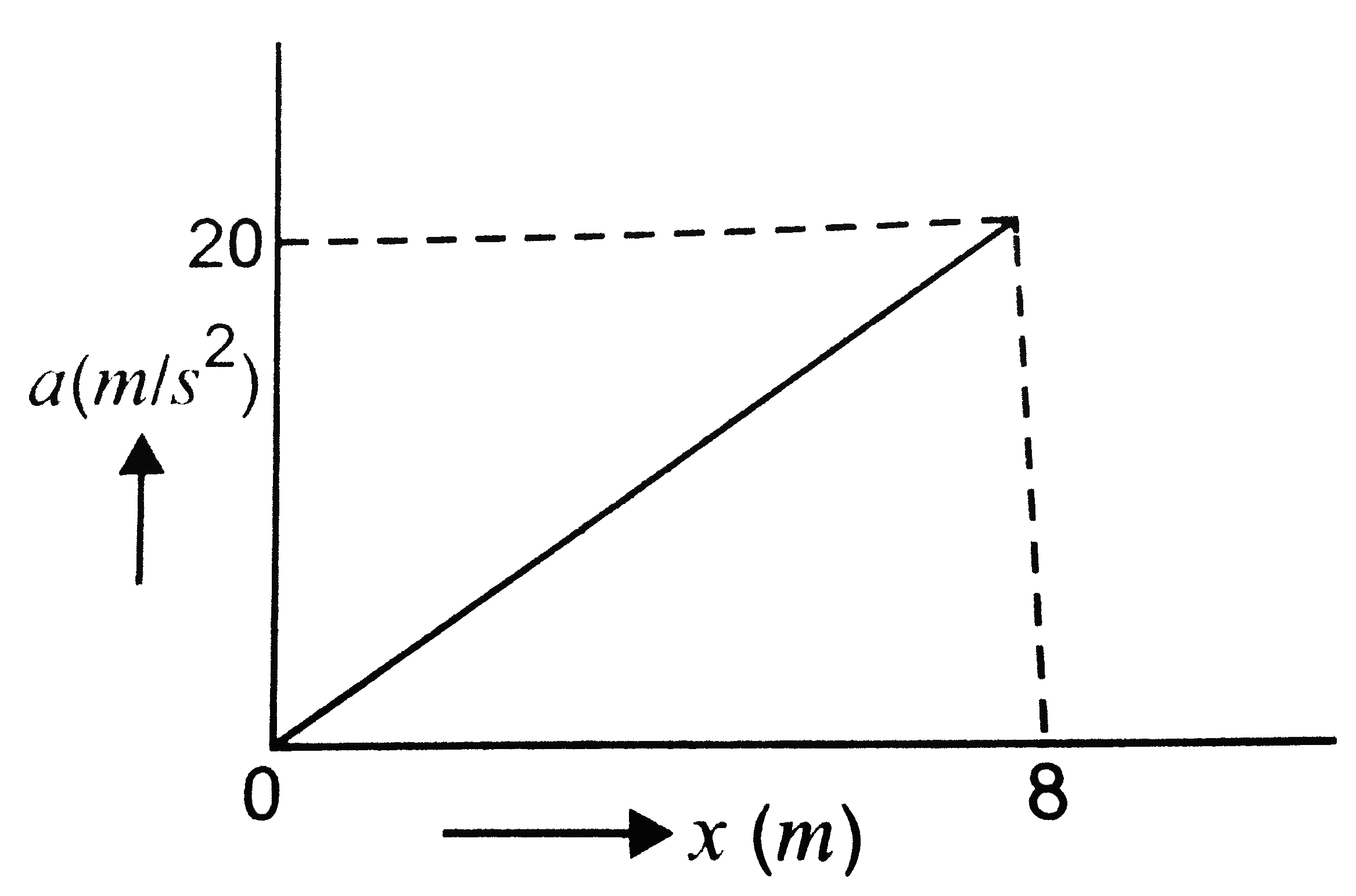
View SolutionIf 100 N force is applied to 10 kg block as shown is diagram, then the acceleration produced in lower block is
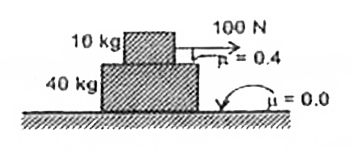
View SolutionThe friction acting on the upper block is
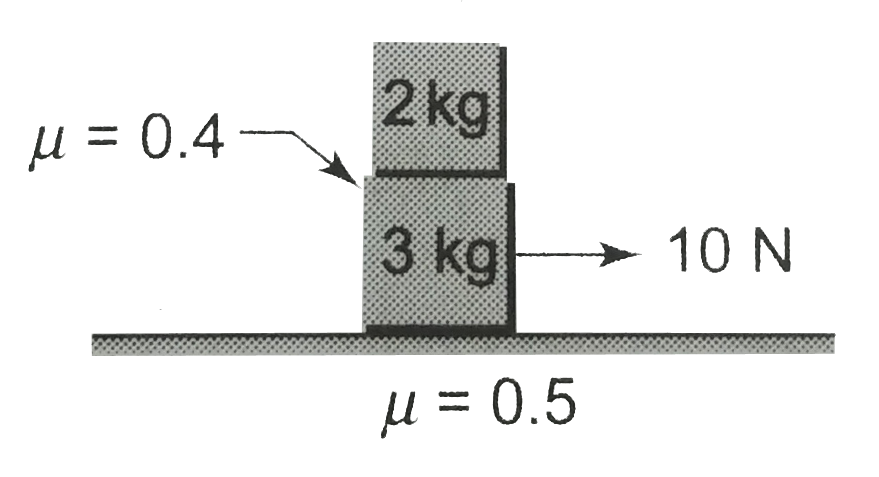
View SolutionA block of mass 2kg is kept on the floor. The coefficient of static friction is 0.4 . If a force F of 2.5N is applied on the block as shown in the figure, the frictional force between the block and the floor will be.

View Solution
